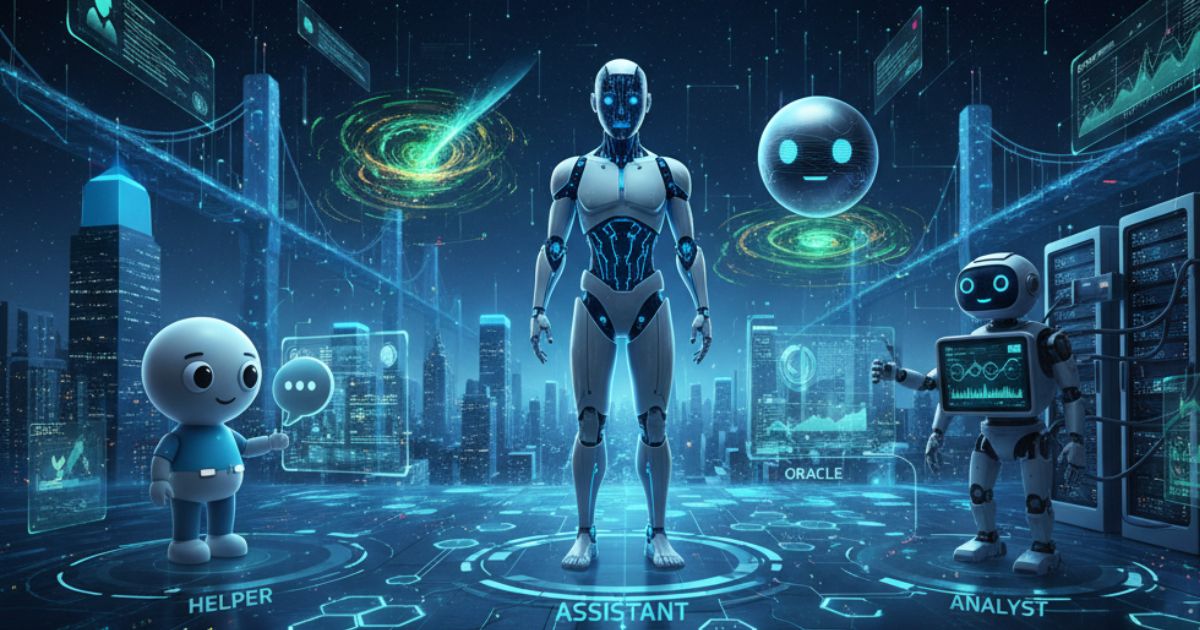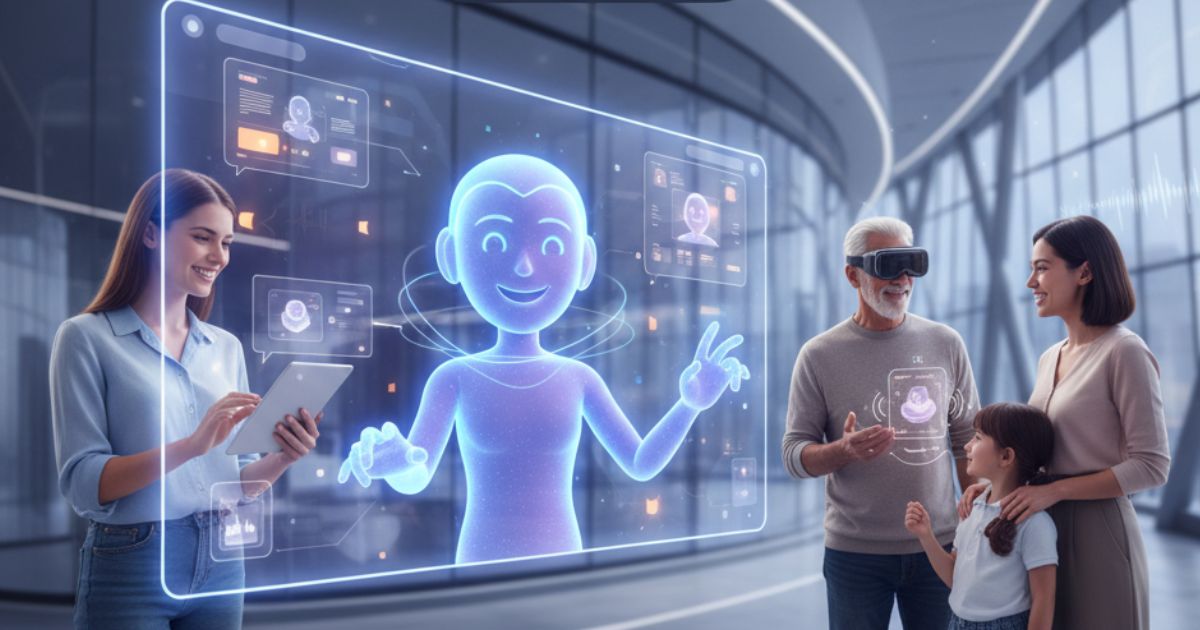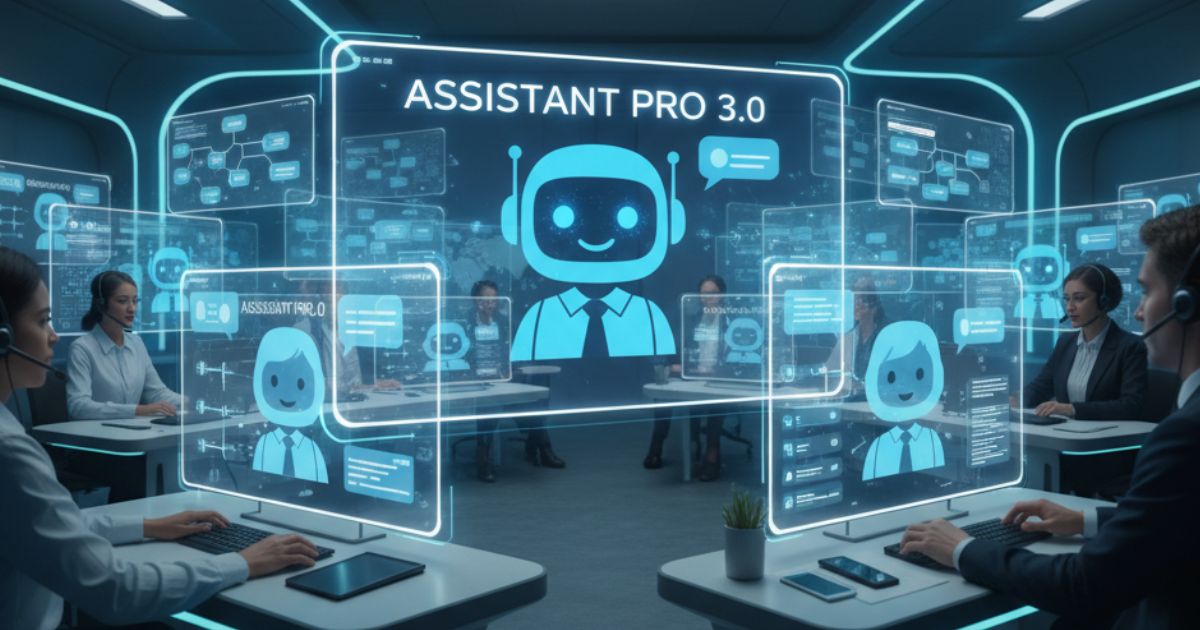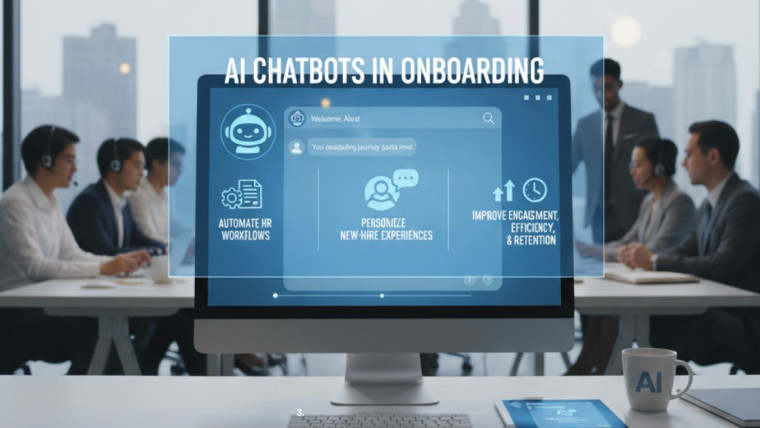AI chatbots are revolutionizing the way businesses interact with their customers. These intelligent systems have evolved from simple automated responses to sophisticated conversational partners that understand context, emotions, and complex customer needs.
The customer experience landscape is shifting rapidly. Companies that once relied on traditional support channels are now embracing AI-driven customer service solutions to meet the rising expectations of their customers. Modern consumers expect instant responses, 24/7 availability, and personalized interactions—demands that AI chatbots are uniquely positioned to fulfill.
This comprehensive guide explores the current state of conversational AI, emerging trends reshaping the industry, and breakthrough innovations that will define customer support automation. You’ll discover how leading companies leverage these technologies and what the future holds for chatbots, benefiting both businesses and consumers alike.
Whether you’re considering implementing AI chatbots or upgrading existing systems, understanding these developments will help you make informed decisions about your customer experience strategy.
Current State of AI Chatbots in Customer Service

AI chatbots have matured significantly from their early rule-based predecessors. Today’s systems utilize natural language processing (NLP) and machine learning to deliver more human-like interactions.
How Modern Chatbots Work
Contemporary AI customer service platforms process customer queries through multiple layers of understanding. They analyze intent, extract key information, and generate contextually appropriate responses. This process occurs in milliseconds, resulting in seamless conversational experiences.
Advanced chatbots maintain conversation history, remember customer preferences, and can escalate complex issues to human agents when necessary. This hybrid approach ensures that customers receive appropriate support, regardless of the complexity of their query.
Industry Adoption Rates
Businesses across sectors have embraced customer support automation. Retail companies utilize chatbots to handle product inquiries and track orders. Financial institutions deploy them for account management and fraud alerts. Healthcare providers leverage conversational AI for appointment scheduling and basic health information.
The success of integration varies depending on the quality of implementation and user acceptance. Companies that invest in proper training and continuous improvement see higher customer satisfaction rates and operational efficiency gains.
Key Trends Shaping the Chatbot Future

Several significant trends are driving the evolution of AI chatbots in customer experience. These developments promise to make interactions more natural, efficient, and valuable for both businesses and customers.
Multimodal Conversational Experiences
The next generation of AI chatbots will seamlessly blend text, voice, and visual elements. Customers will interact through their preferred communication channels while maintaining conversation continuity across platforms.
Voice-enabled chatbots are becoming more sophisticated, handling complex spoken queries with improved accuracy. Visual recognition capabilities allow customers to share images for product identification or troubleshooting assistance.
This multimodal approach creates more intuitive customer interactions. Instead of navigating complex menu systems, users can describe problems naturally or show what they need help with.
Emotional Intelligence Integration
AI chatbots are developing emotional awareness capabilities. These systems analyze tone, word choice, and conversation patterns to gauge customer sentiment and adjust responses accordingly.
When customers express frustration, emotionally intelligent chatbots recognize and respond to these feelings, adapting their communication style accordingly. They might offer apologies, provide additional assistance options, or escalate to human agents more quickly.
This emotional understanding helps maintain positive customer relationships even during challenging interactions. Companies report improved customer satisfaction scores when implementing emotion-aware conversational AI systems.
Predictive Customer Support
Advanced AI chatbots are moving beyond reactive support to predictive assistance. These systems analyze customer behavior patterns, purchase history, and interaction data to anticipate needs before problems arise.
Proactive outreach becomes possible when chatbots identify potential issues. Customers may receive notifications about product recalls, delivery delays, or maintenance reminders before needing to contact support.
This predictive approach reduces customer effort while demonstrating proactive care. Companies using predictive customer support automation report decreased support ticket volumes and increased customer loyalty.
Breakthrough Innovations in AI Customer Experience

Revolutionary technologies are transforming what’s possible with AI chatbots in customer experience. These innovations address current limitations while opening new possibilities for customer engagement.
Large Language Models Integration
Modern AI chatbots leverage large language models (LLMs) to understand and generate more natural conversations. These models have been trained on vast amounts of text data, enabling them to handle complex queries and provide detailed, contextually relevant responses.
LLM-powered chatbots can explain complex products, walk customers through multi-step processes, and even engage in creative problem-solving. They understand nuanced language, including slang, regional expressions, and industry-specific terminology.
The integration of these models represents a significant leap in conversational quality. Customers often struggle to distinguish between AI and human responses, resulting in improved satisfaction and higher acceptance rates.
Real-Time Learning Capabilities
Next-generation AI chatbots continuously learn from each interaction. They adapt their responses based on successful conversation outcomes and customer feedback, becoming more effective over time.
This real-time learning extends beyond individual conversations. Chatbots analyze patterns across all customer interactions, identifying common issues and developing better resolution strategies.
Companies benefit from systems that improve automatically without manual intervention. The chatbots become more knowledgeable about products, services, and customer preferences through continuous exposure to real customer needs.
Integration with Business Systems
Modern customer support automation connects deeply with existing business infrastructure. AI chatbots access customer databases, inventory systems, order management platforms, and knowledge bases to provide comprehensive assistance.
This integration enables chatbots to perform complex tasks, such as processing returns, updating account information, or checking real-time inventory availability. Customers receive comprehensive service without needing to transfer between multiple systems or agents.
Seamless system integration also ensures data consistency across all customer touchpoints. Information gathered during chatbot interactions updates customer profiles and informs future interactions across all channels.
Industry-Specific Applications and Use Cases
Different industries are implementing AI chatbots in unique ways that address sector-specific challenges and opportunities. These specialized applications demonstrate the versatility of conversational AI in customer experience.
E-commerce and Retail
Online retailers use AI chatbots to provide personalized shopping assistance. These systems recommend products based on customer preferences, answer detailed product questions, and guide users through the purchase decision process.
Chatbots handle post-purchase support, including order tracking, return processing, and warranty claims. They can process exchanges, schedule deliveries, and resolve common shipping issues without human intervention.
Visual search capabilities allow customers to upload images and find similar products. This feature bridges the gap between offline inspiration and online shopping, improving conversion rates.
Healthcare and Telemedicine
Healthcare organizations deploy AI chatbots for appointment scheduling, symptom checking, and patient education. These systems help patients navigate complex healthcare systems while reducing administrative burdens.
Chatbots offer medication reminders, dietary guidance, and wellness tips tailored to individual patient profiles. They can escalate urgent symptoms to medical professionals while handling routine inquiries independently.
Privacy and security considerations are paramount in healthcare applications. Modern medical chatbots comply with healthcare regulations while maintaining conversational effectiveness.
Financial Services and Banking
Banks and financial institutions use conversational AI for account management, transaction support, and financial guidance. Customers can check balances, transfer funds, and receive spending insights through natural language interactions.
AI chatbots help with fraud detection and prevention by alerting customers to suspicious activities and guiding them through security protocols. They can temporarily freeze accounts, reset passwords, and provide assistance with identity verification.
Investment and insurance advice delivery through chatbots makes financial guidance more accessible. These systems explain complex financial products, helping customers make informed decisions.
Measuring Success and ROI of AI Chatbot Implementation
Organizations need clear metrics to evaluate the effectiveness of their AI customer service investments. Success measurement goes beyond basic operational metrics to include customer satisfaction and business impact indicators.
Key Performance Indicators
Resolution rate measures the percentage of customer queries that are successfully handled without requiring human intervention. High-performing AI chatbots achieve resolution rates above 80% for common inquiries.
Response time tracking ensures customers receive timely assistance. Modern chatbots respond instantly to most queries, with average response times under five seconds for straightforward requests.
Customer satisfaction scores specifically related to chatbot interactions offer insight into the quality of the user experience. Regular surveys help identify areas for improvement and measure progress over time.
Cost Analysis and Business Impact
Customer support automation delivers significant cost savings through reduced staffing requirements. Companies typically experience 30-50% reductions in support costs after successfully implementing a chatbot.
Revenue impact measurement encompasses sales facilitated by chatbots, upselling success rates, and improvements in customer retention. E-commerce companies often report increased conversion rates when chatbots provide shopping assistance.
Operational efficiency gains extend beyond direct cost savings. Human agents handle more complex, high-value interactions when chatbots manage routine inquiries, improving overall team productivity.
Challenges and Considerations for Implementation
Despite their benefits, AI chatbots present implementation challenges that organizations must address for successful deployment. Understanding these obstacles enables companies to prepare for smoother rollouts and achieve better outcomes.
Technical Integration Complexities
Legacy system integration often requires significant technical effort. Older customer management systems may need upgrades or custom connectors to work effectively with modern AI chatbots.
Data quality and consistency across systems affect chatbot performance. Incomplete or inaccurate customer data leads to poor chatbot responses and frustrated customers.
Scalability planning ensures chatbots can handle traffic spikes without performance degradation. Companies need infrastructure that supports growth while maintaining response quality.
Privacy and Security Concerns
Customer data protection becomes more complex when AI systems process personal information. Organizations must implement robust security measures and comply with data privacy regulations.
Conversation logging and analysis raise privacy questions about how customer interactions are stored and used. Clear privacy policies help customers understand how their data is used, thereby building trust.
Cybersecurity threats targeting AI systems require specialized protection strategies. Chatbots can become attack vectors if not properly secured against malicious inputs and attempts to extract sensitive information.
User Adoption and Training
Customer education helps users understand the capabilities and limitations of chatbots. Clear communication about when to use chatbots versus human agents improves satisfaction and success rates.
Staff training ensures human agents can work effectively with AI systems. Support teams need to understand how chatbots escalate issues and what information they provide.
Change management strategies address organizational resistance to automation. Successful implementations involve stakeholders in planning and demonstrate clear benefits for both customers and employees.
The Road Ahead: Preparing for Tomorrow’s Customer Experience
The future of AI chatbots in customer experience promises even more sophisticated and valuable interactions. Organizations that adopt these technologies while addressing implementation challenges will gain a competitive advantage in customer service delivery.
Successful chatbot deployment requires strategic planning, technical expertise, and commitment to continuous improvement. Companies should begin with clear objectives, invest in high-quality systems, and prioritize customer feedback throughout their development process to help AI achieve customer satisfaction at scale.
The conversational AI landscape will continue evolving rapidly. Staying informed about new developments, maintaining flexible implementations, and prioritizing customer value will ensure long-term success with AI-driven customer service initiatives.
As these technologies mature, the distinction between human and AI interactions will continue to blur. The most successful companies will be those that utilize AI chatbots to enhance, rather than replace, human connections, creating customer experiences that are both efficient and genuinely helpful.
FAQs
What makes AI chatbots different from traditional chatbots?
AI chatbots utilize machine learning and natural language processing to comprehend context and deliver personalized, dynamic responses. Traditional chatbots follow pre-programmed rules and can only handle specific commands or keywords.
How do AI chatbots handle complex customer issues?
Modern AI customer service systems recognize when issues exceed their capabilities and smoothly transfer customers to human agents. They provide conversation context and customer information to ensure seamless handoffs.
Can AI chatbots work in multiple languages?
Yes, advanced conversational AI systems support multiple languages and can automatically detect the customer’s preferred language. They maintain consistent service quality across different languages.
How long does it take to implement an AI chatbot system?
Implementation timeframes vary based on complexity and integration requirements. Simple deployments take 4-6 weeks, while comprehensive systems with multiple integrations may require 3-6 months.
What industries benefit most from AI chatbots?
E-commerce, financial services, healthcare, and technology companies see significant benefits from customer support automation. However, any industry with high-volume customer interactions can benefit from AI chatbots.
How do companies measure chatbot success?
Key metrics include resolution rate, customer satisfaction scores, response times, cost savings, and business impact measurements, such as increased sales or improved retention rates.








Transforming Employee Onboarding with AI Chatbots: A Step-by-Step Guide
Emergency Response Chatbots: Revolutionizing Crisis Management with AI
Revolutionizing Recruitment: How Chatbots Streamline Hiring Processes and Elevate Talent Acquisition
The Future of AI Chatbots in Customer Experience: What’s Next?